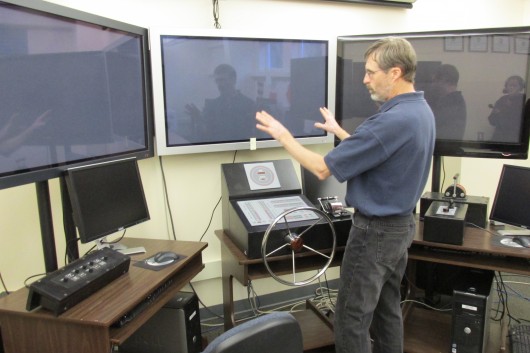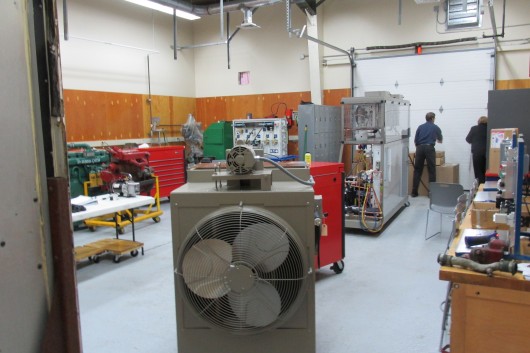University of Alaska Southeast Ketchikan will receive $6.6 million in federal Title III funds over the next five years.
The grant is aimed at increasing the number of Alaska Native and rural Alaskans who finish UAS Ketchikan programs. The university hopes to achieve that by growing the capacity of its maritime programs.
A large chunk of the Title III grant will go toward renovating the UAS Ketchikan Technical Center on Stedman St., which houses GED testing, certified nurse aid and nursing program, marine programs, welding classes and this semester, an art class.
Wendy Miles is assistant director for business operations here. She wrote the grant application. Title III grants focus on improving education for rural Alaskans, Native Alaskans, and Native Hawaiians. “Rural Alaskans” applies to everyone in Ketchikan and surrounding islands.
Miles says UAS Ketchikan has received several Title III grants in the past. But this is the biggest one. It’ll help build on a new offering called the Maritime and Multi-Skilled Worker course, which started up last year with help from another Title III grant.
“It’s very hands on, very intensive,” Miles said. “It’s a Monday through Friday, 9-4, for 12 weeks. There’s a high demand for people with the skills in welding, in hydraulics, in diesel repair, in electrical repair”
The class trains students in skills they could use to get jobs on the Alaska Marine Highway System, Vigor Alaska shipyard, seafood processing plants and more.
The lab where the Multi-Skilled Worker program is taught is about 30 by 30 feet. It’s crowded with electrical trainers on one wall, a refrigeration unit on another, some diesel engines bunched together.
Currently, there are 12 students in the course and two on the wait list. The students have to cram into the room to learn how to repair and maintain the different types of equipment.
“We are hard-up for space around here,” said Larry O’Loane, the professor who teaches the course. “It’s kinda crowded. We have to push engines off to side and they get stacked up and then you can’t get back at ’em…It’s an uncomfortable space to work in and it’s not an environment that is most conducive to teaching.”
Ideally, the new grant will be able to break up each training area into its own lab space.
The Multi-Skilled Worker program focuses on “below the deck” trades: working the engines and parts of the ship you can’t see from the outside. The Title III grant also will help with space for the “above the deck” marine classes.
“My department, we train mariners who work in deck department, that’s everybody who handles cargo, handles the line and navigates and pilots the vessel,” said Dale Miller, an assistant professor of marine transportation.
Miller hopes the grant-funded renovation will give more space for his marine classes’ ship simulators. Students use the simulators to learn how to navigate a range of vessels through all kinds of weather conditions.
“We’re running out of space,” Miller said. “This is pretty tight. We have five different bridges, and we’re hoping to remodel the building so we have a larger classroom for the simulator.”
Wendy Miles gave a tour of the whole Tech Center, which is made up of an older part – the Hamilton building, and a newer part, the Robinson building. There are classrooms and programs besides the maritime ones that Miles says need improvements.
“I think we are going to take this first year and take a look at what we can do with these spaces,” Miles said. “With the reality of the fact that we probably are not going to add any additional building space. So how can these two buildings be reconfigured to really meet the needs of the classes that we hold down here?”
The first year of the grant will fund renovation planning. As Miles said, there probably won’t be any addition built on to the Tech Center.
Another piece of the grant — about $140,000 each year will go toward new classroom technology throughout the UAS Ketchikan buildings. Miles says that might include overhead projectors and smart screens.
As for the Maritime and Multi-Skilled worker program, O’Loane has seen the results. Of the eight who were in the first run of the class last year…
“As far as I know they’re all working and I believe seven of them are working in the maritime field,” O’Loane said.
Once the program has more space, O’Loane hopes to train 16 students at a time.







